blood bank
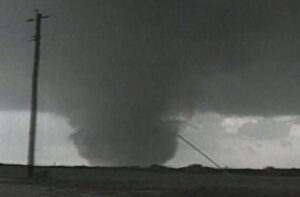
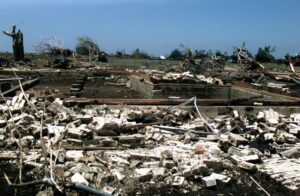 Tornadoes can happen anywhere, but there are areas of the country that are more prone to tornadoes. Nevertheless, the F-5 tornado is extremely rare, and thankfully so, but when one hits a town, it is…devastating!! On May 27, 1997, an F-5 tornado his Jarrell, Texas, killing 27 people and destroying dozens of homes. That damage and loss of life was horrific, but it was what happened afterward that was truly amazing.
Tornadoes can happen anywhere, but there are areas of the country that are more prone to tornadoes. Nevertheless, the F-5 tornado is extremely rare, and thankfully so, but when one hits a town, it is…devastating!! On May 27, 1997, an F-5 tornado his Jarrell, Texas, killing 27 people and destroying dozens of homes. That damage and loss of life was horrific, but it was what happened afterward that was truly amazing.
Once the news of the devastating tornado broke, people from near and far started showing up to do whatever it took to help out. In fact, people showed up by the busloads. The people were there to help with the cleanup, but that wasn’t really all they were there for. Upon arrival, they found that there was a great need for blood, because many who were critically injured needed blood and without a second thought, they showed up at blood banks and hospitals, ready to donate the critical blood that was needed. Besides giving blood, volunteers helped pick up debris and rubble. The work was hard, but those who arrived in Jarrell wanted to show their support to the residents of the devastated town.
The town of Jarrell, population around 400 at the time of the tornado lost entire families, like the Igo family of five, the Moehring family of four, the Smith family of three, and the Gower family of 2. but since the tornado, the town has really been growing. These days, Jarrell has more than 1750 people in residence. Really, that goes to show that these people were not going to give up. They were going to rebuild their lives and their town. Twenty-five years can make a huge difference in a town’s history. People can forget what happened so long ago, but if the survivors never forget, they can pass the history of the tragedy on to the future generations.
I’m sure that over the years, there were those who couldn’t bear to stay there any longer. That happens too. Not everyone is able to move on from the past, and sometimes people just don’t want to stay where there has been so much loss. There is really no right or wrong thing to do, it is simply what the people who went through 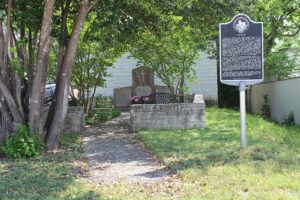
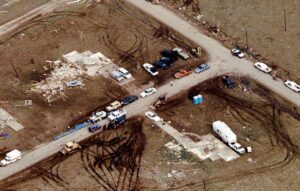 the tragedy need to do in order to heal. As for the town, it has been rebuilt and it is growing all the time. I think that Jarrell will thrive again, and maybe even become a larger city in time. The fact that the town has the ability to heal and move on is due in large part to the help of the amazing people came to the rescue 25 years ago in Jarrell’s hour of need.
the tragedy need to do in order to heal. As for the town, it has been rebuilt and it is growing all the time. I think that Jarrell will thrive again, and maybe even become a larger city in time. The fact that the town has the ability to heal and move on is due in large part to the help of the amazing people came to the rescue 25 years ago in Jarrell’s hour of need.
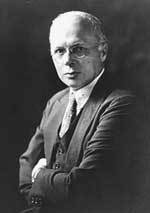 Modern medicine has come a long way through the advances of a number of people, one of the greatest being Richard Lewisohn. Born July 12, 1875, in Hamburg, Germany, Lewisohn studied medicine at the University of Freiburg, which is still one of the most prestigious medical schools in Europe. He obtained his medical degree in 1899, and in 1906, he immigrated to New York. Lewisohn’s initial interest was in the digestive system (gastroenterology). He began his work at Mount Sinai Hospital, but, it ended up being his work with blood transfusions that made him the medical hero he was.
Modern medicine has come a long way through the advances of a number of people, one of the greatest being Richard Lewisohn. Born July 12, 1875, in Hamburg, Germany, Lewisohn studied medicine at the University of Freiburg, which is still one of the most prestigious medical schools in Europe. He obtained his medical degree in 1899, and in 1906, he immigrated to New York. Lewisohn’s initial interest was in the digestive system (gastroenterology). He began his work at Mount Sinai Hospital, but, it ended up being his work with blood transfusions that made him the medical hero he was.
The blood is a complicated matter, and the study of the blood, or rather the experimentational use of the blood, often ended with tragic, and even fatal results. Of course, much of the problem came from having no understanding, or even any knowledge of blood types. The discovery of blood types didn’t come about until 1901, when Karl Landsteiner discovered that blood consisted of different types. Some types were compatible and could be transfused, leading to healing, but other types coagulated when mixed and would kill you. It was an amazing discovery, but Landsteiner’s discovery did not change medicine overnight. Doctors still faced the the fact that when blood was removed to transfuse into another person, it quickly clotted, making it unusable. That led to a direct method of transfusion, crazy in and of itself, in which doctors would sew the veins and arteries of the donor and the recipient together. Maybe it worked, but it just wasn’t practical. Not only did you have to have a donor with the correct type on hand, but the physician didn’t know how much blood was being pumped into the patient, or out 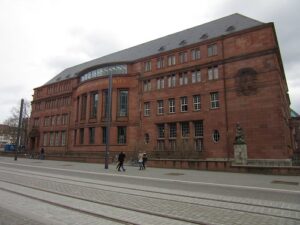 of the donor, for that matter. They needed a way to have blood on hand, and in measurable containers, all without having to deal with spoilage.
of the donor, for that matter. They needed a way to have blood on hand, and in measurable containers, all without having to deal with spoilage.
In April 1914, a Belgian physician named Albert Hustin, proved that sodium citrate could be used as an anticoagulant in diluted blood. Lewisohn immediately jumped upon this insight and set up detailed experiments using sodium citrate and dog blood. Through Lewisohn’s experiments transfusing dogs, he was able to determine the exact concentration of sodium citrate that was both safe and effective for blood transfusions. He was also able to keep the extracted blood viable for two days prior to transfusion. More study would eventually increase that timeframe up to 14 days.
This was exactly what the world needed…blood could be stored, and made available as needed. Lewisohn’s work led to the storage of blood in blood banks. It is a discovery that is credited with saving over 1 billion lives to date. Lewisohn’s discovery, occurring at the time of World War I, as well as his findings concerning blood storage for transfusions was used as a method to save the lives of wounded soldiers. Use of blood transfusions  expanded after the war. By the 1930s Blood Banks became common in cities worldwide, making blood transfusions the most important lifesaving medical advance in history.
expanded after the war. By the 1930s Blood Banks became common in cities worldwide, making blood transfusions the most important lifesaving medical advance in history.
In 1955 Lewisohn received the American Association of Blood Banks’ Karl Landsteiner Memorial Award. In January 1959 he became an honorary fellow of the Royal College of Surgeons of England, having been a fellow of the American College of Surgeons since 1916. Lewisohn was also a Fellow of the American Gastroenterological Association, and served on the American Board of Surgery. He passed away (probably of natural causes, but I cannot confirm that) on August 11, 1961 in New York City. He was 86 years old.

